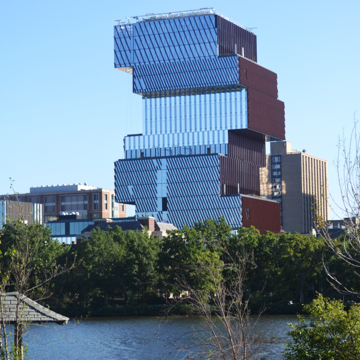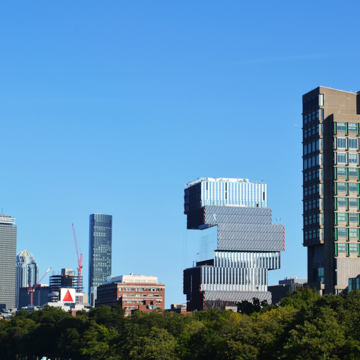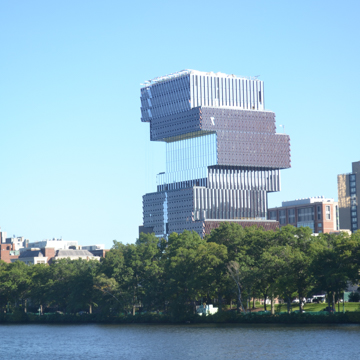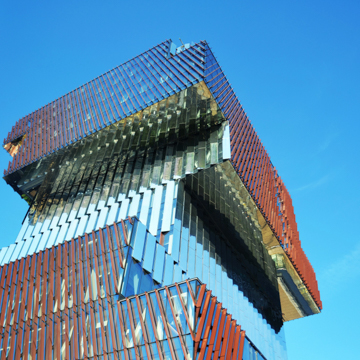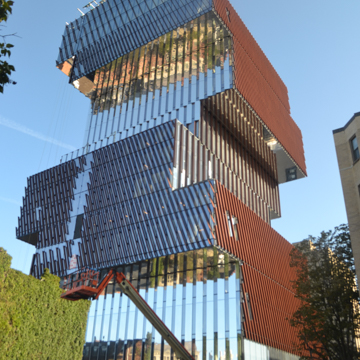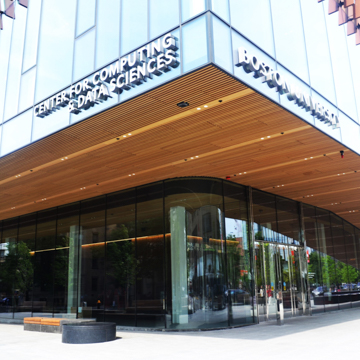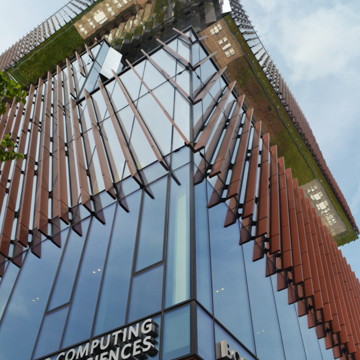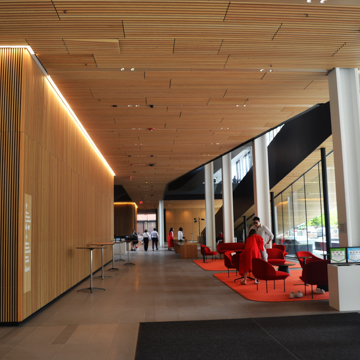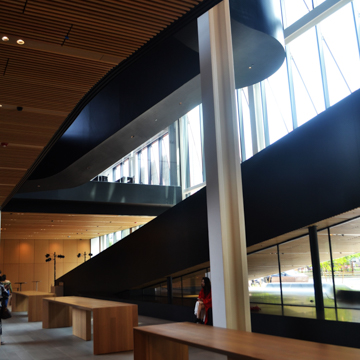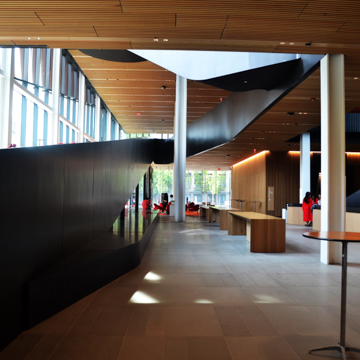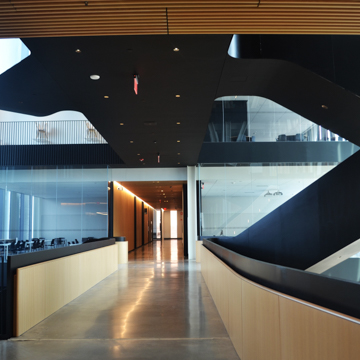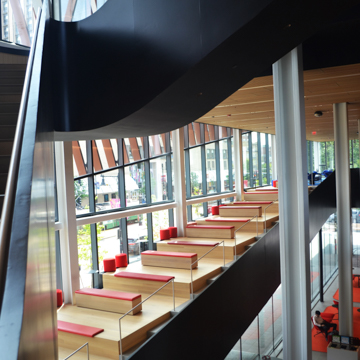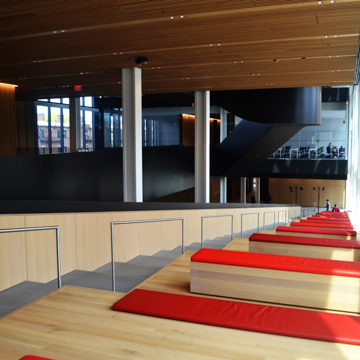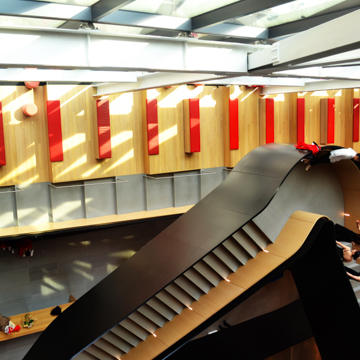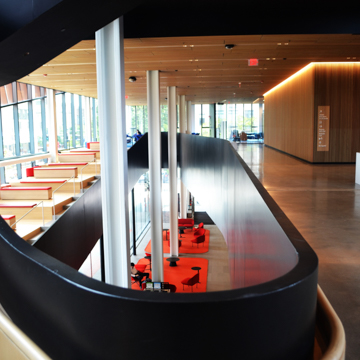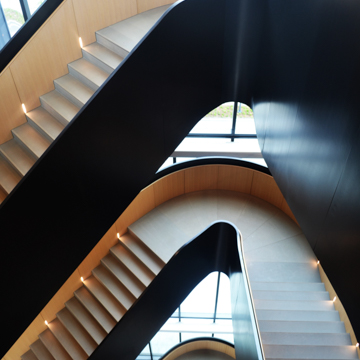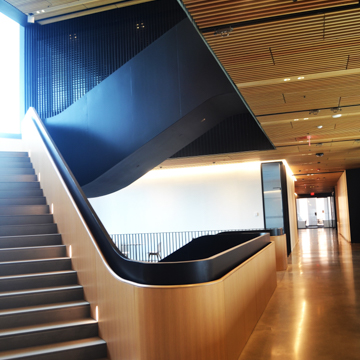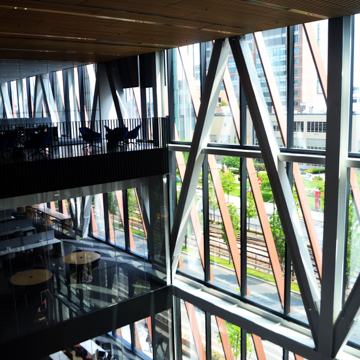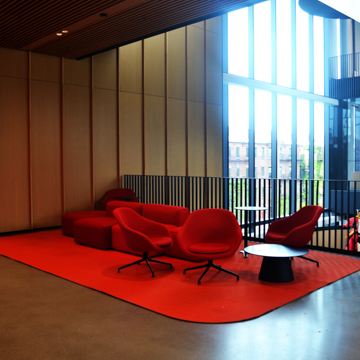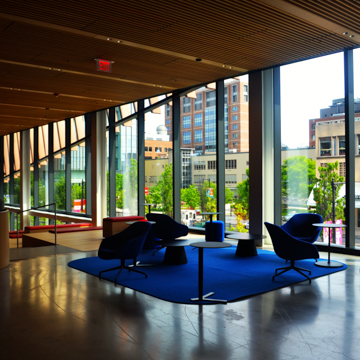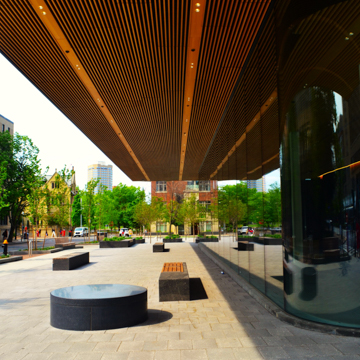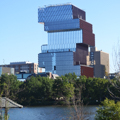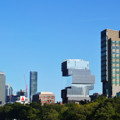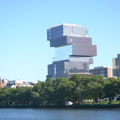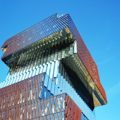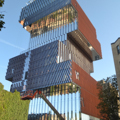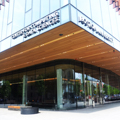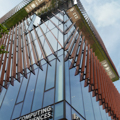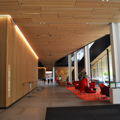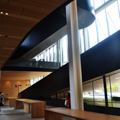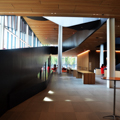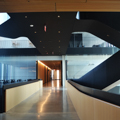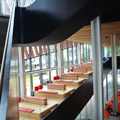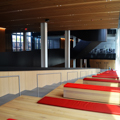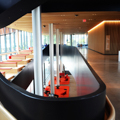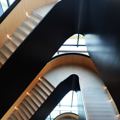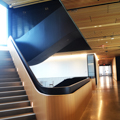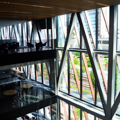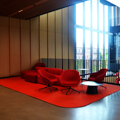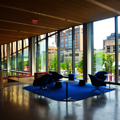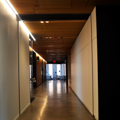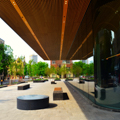Designed by the KPMB Team of Canada, Boston University’s Center for Computing & Data Sciences is a significant sign of the university’s commitment to its leadership on climate action. This 19-story tower is one of the leading “fossil-free buildings” in the city and its profile— a series of cantilevered volumes that rise 92 meters in height—has become iconic within the surrounding urban landscape. The cantilevered design offers green terraces and rainwater retention.
The facade’s combination of transparent and reflective glass surfaces along with an exposed steel structure creates a dynamic design that establishes visual connection to the surrounding urban context. Rust-colored painted aluminum panels are a nod to Boston’s red brick townhouses. The interior is characterized by an eight-story atrium that provides natural light and also allows visual connections to the cross-disciplinary spaces throughout the building: math and statistics are located on the bottom floors, computer science on the middle floors, and interdisciplinary work areas and public spaces are on the upper floors. A large steel stairwell rises through the atrium.
The fossil-fuel-free design employs a closed-loop geothermal heating system powered by 31 geothermal boreholes to provide effective heating and cooling capacity. The facade’s diagonal louvres and triple-glazed glass windows retain heat during the winter and keep the building cool during the summer; this optimized shading system works together with heat pumps to provide interior thermal comfort. Designed to LEED Platinum standards, the outdoor terraces of the Center provide not only a space to connect with the urban environment, but also support reduction of the heat island effect.
The Center reduces its embodied carbon by using Portland cement, steel from the least impactful production sites, and optimized building methods. Sealants and finishes on the interior have few or no volatile compounds, resulting in improved air quality for occupants. As a part of the Climate Action Plan, the ground floor is 1.25 feet higher than Boston University's “Elevation of Resilience” to protect the Center from any damage caused by potential floods.
KPMB received several awards for this design, including a 2023 award from the Environmental Business Council of New England that recognizes projects for their environmental and energy resources management, the Canadian Architect Award of Merit in 2020, and was the Architizer A+ Awards Jury Winner in 2019.
References
“Boston University Center for Computing & Data Sciences.” Canadian Architect, December 1, 2020.
“Boston University Center for Computing & Data Sciences.” KPMB. https://www.kpmb.com/.
Chesto, Jon. “BU Finishes its Jenga Building, the Most Environmentally Friendly Tower in the City.” Boston Globe, December 6, 2022.
Laskowski, Amy. “Update on BU’s Center for Computing & Data Sciences: Nine things to know as building begins to rise." BU Today, February 3, 2021.














